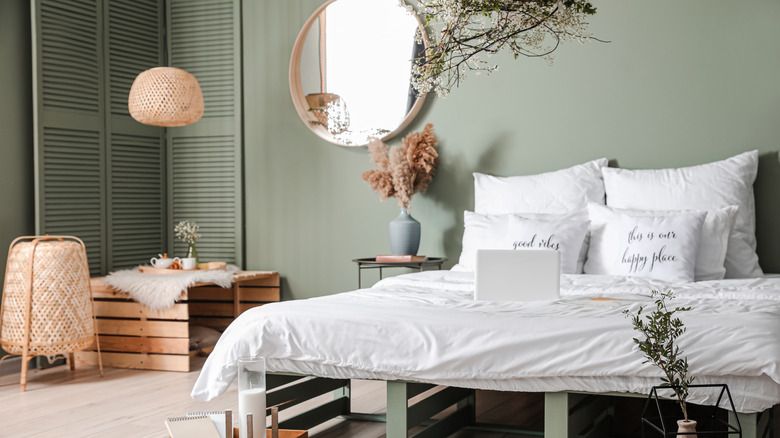How The Color Of Your Bedroom Can Affect Your Sleep
It can be argued that the bedroom is the most personal and intimate room in your home. While there's nothing wrong with wanting to make sure it's just as decorated and chic as the rest of your living spaces, above all else, the bedroom should be conducive to a cozy and relaxing sleep environment.
According to Healthline, 35% of adults aren't getting the recommended seven to nine hours of sleep they need each night. It may not seem like a big deal, but sleep deprivation can hinder your health in many ways. Your ability to lose or maintain weight, concentrate, and be productive are all affected by how much sleep you get. Other health matters impacted by sleep include athletic performance, immune system and metabolic health, depression, and inflammation.
One of the most important factors in creating a bedroom that will help you sleep well is which color you choose to paint the walls.
These 3 colors are best for your bedroom
Feng Shui expert Anjie Cho told Mindbodygreen that pale, earthy neutrals and soft hues will help ensure soothing sleep. With that in mind, soft blue is a great color for a bedroom as it calms the mind, mood, and nervous system, according to Sleep.org. In addition to painting your walls soft blue, you can incorporate the color by adding throw pillows and candles to the room in the same shade.
Another color that can help you sleep soundly is sage green or mint green, per Mindbodygreen. Like blue, it's also calming. The nature vibes it provides are associated with grass, trees, and plants which can help you destress and relax. Aside from painting your walls sage or mint green, bringing green plants in the room or hanging green colors can give the same good feelings.
Beige may be boring, but it can do wonders for your sleep — especially in terms of creating balance and eliminating distractions. Since beige plays well with others, you can paint your walls this color and add some blue or green elements for a totally inviting sleep experience.


